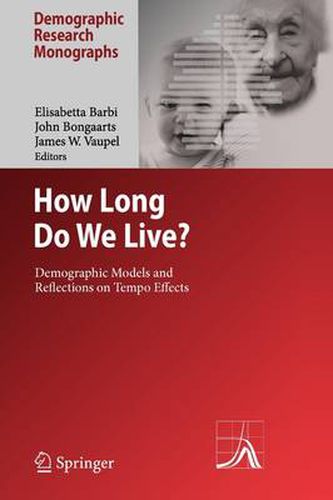How Long Do We Live?: Demographic Models and Reflections on Tempo Effects

How Long Do We Live?: Demographic Models and Reflections on Tempo Effects
This title is printed to order. This book may have been self-published. If so, we cannot guarantee the quality of the content. In the main most books will have gone through the editing process however some may not. We therefore suggest that you be aware of this before ordering this book. If in doubt check either the author or publisher’s details as we are unable to accept any returns unless they are faulty. Please contact us if you have any questions.
How should life expectancy be calculated? More generally, how should life - bles be estimated? Since John Graunt’s pioneering contribution, read before theRoyalSocietyofLondonat6p. m. onthe27thofFebruary1661,demog- phers have developed better and better methods. Some concerns were raised, including concerns about how to deal with heterogeneous populations p- lished in an article inDemography in 1979 that I wrote with Kenneth Manton and Eric Stallard. Yet, a few years ago nearly all demographers believed that as long as the underlying population and death counts were accurate, then lifetables could be reliably estimated. John Bongaarts and Gri? Feeney launched a revolutionary assault on this dogma. Two key contributions by them are reprinted in Part I of this mo- graph. Some very good demographers agreed, as least in part, with B- gaarts’ and Feeney’s radical argument that when death rates are changing, then tempo e?ects distort conventional calculations of life expectancy. Other very good demographers disagreed. So John Bongaarts and I brought some leading demographers together in a research meeting, co-sponsored by the Max Planck Institute for Demographic Research and the Population Co- cil and held in New York City on November 18 and 19, 2004. Many of the papers discussed at the workshop, generally after considerable revision, were published in Demographic Research in 2005 and 2006. Nine of these articles, in some cases somewhat revised, are published in this monograph: they are the ?rst seven chapters in Part II and the two chapters in Part III.
This item is not currently in-stock. It can be ordered online and is expected to ship in 7-14 days
Our stock data is updated periodically, and availability may change throughout the day for in-demand items. Please call the relevant shop for the most current stock information. Prices are subject to change without notice.
Sign in or become a Readings Member to add this title to a wishlist.


